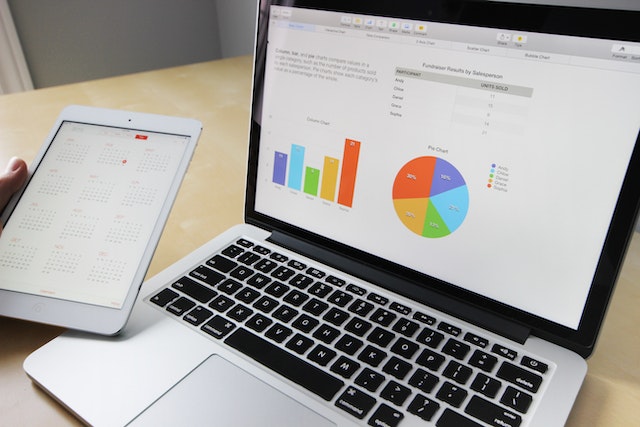Have you been debating whether or not to promote your business on LinkedIn? Discover the unique selling points that LinkedIn advertising offers.
Marketing on LinkedIn is a passing fad. To no one’s surprise, it’s quickly becoming an integral part of the modern digital advertising mix.
Email, Facebook, Twitter, and even Snapchat are just a few examples of the many casual marketing methods available today. However, these services cater to our unique online identities.
Therefore, it is crucial to explore the advertising plan that resonates with the modern businessperson.
And this is where LinkedIn really shines: in helping you reach out to niche business audiences with your message.
With so many social media sites out there, it can be difficult to choose the best one for your business’s promotional needs.
The once distinct boundaries between social media advertising networks are now largely blurred.
Most channels allow you to choose from a variety of text, image, and video ad types to best suit your campaign’s needs.
In addition, the direct sponsored messaging alternatives available across these platforms allow you to significantly extend your sphere of influence.
However, LinkedIn’s features go far beyond those of other social media sites.
Let’s take a look at what sets LinkedIn’s advertising apart from the rest of the field.
The following are some suggestions to help you incorporate LinkedIn more strategically into your existing media plan.
A Genuine Business Network That’s Open To Everyone
Users are more likely to interact with information on LinkedIn if it is relevant to their field of work and profile.
To put it another way, the site serves as a kind of playground for those who are interested in:
Get forward in their chosen field.
Share your experiences with others.
It’s important to keep up with the latest news in your field.
Raise awareness of their abilities and insights.
Social networks like Facebook (which has more than 2 billion active users) and Twitter (which has over 100 million) have higher user bases than LinkedIn (which has 600 million or more members).
However, quality trumps quantity in digital marketing.
After all, a solid prospect is the foundation of any successful sale.
LinkedIn advertising is a simple way to get in front of people at the beginning of the buying process.
They are more likely to be receptive to your advertising because of the professional context in which you are dealing with them.
Professional Profile-Based Refined Targeting
Due to their large user bases, the most popular social media advertising platforms are more likely to attract non-targeted viewers, which might have a negative impact on your campaigns.
LinkedIn’s paid advertising options provide access to highly targeted professional audiences, allowing you to directly reach the people who have the power to make purchases on the platform.
LinkedIn’s targeting options include:
Ability set.
Degree.
Industry.
Business Description:
A label for one’s occupation.
Positional responsibilities.
You can shield your resources from inconsequential clicks by excluding specific users with the use of the targeting tools.
Your advertising materials can appear in:
The latest headlines.
Panel, Side.
direct message to a user’s profile, or InMail.
Because of this, you’ll have the options you need to try out different forms of creativity.
In addition to supporting a variety of display, text, video, carousel, and dynamic advertising formats, LinkedIn now enables you to incorporate lead generating forms into your campaigns.
LinkedIn likewise boasts comparable features, but its audience targeting choices are more sophisticated and well-suited to a business setting.
Various social media have different targeting algorithms.
Each service is trying to build a multivariate profile of its users so that they can target them with relevant content.
When it comes to advertising, most businesses are dead set on improving their approach through demographic, behavioral, and interest-based targeting.
LinkedIn goes further than other similar services in its use of targeting.
LinkedIn pages change frequently. Members regularly update their resumes to reflect any new professional accomplishments or degrees earned.
This allows LinkedIn advertisers to target users based on real, member-submitted information, such as:
Experience (e.g. job function, seniority, title) (e.g. job function, seniority, title).
Company (e.g. company name, industry, size, followers) (e.g. company name, industry, size, followers).
Education (e.g. degrees, subjects of study) (e.g. degrees, fields of study).
Additional demographics and affinities worth considering.
Is your ideal client a Cupertino, California local who earned a degree from CalTech 5 years ago, currently works for Apple, and lives in the same zip code? With LinkedIn’s help, your ad will be shown solely to those that fit your specific criteria.
Sponsored InMail allows you to send a customised message to a LinkedIn user when you know they will be on the site, regardless of whether or not they are already following your company.
On other social media platforms, you can only send someone private messages if they’ve specifically requested to receive them. Consider the following as an illustration:
by clicking on a registration link.
A valid email address was entered.
A loss of other means of communication.
LinkedIn InMail allows you to bypass traditional marketing barriers and get your message straight in front of qualified leads.
Higher Rates of Conversion
Competitive conversion rates are not achieved by chance in today’s ad-saturated environment.
With LinkedIn’s help, you can increase the percentage of site visitors who become leads by having your message sent directly to the people most likely to be interested in it.
Who in the corporate world is responsible for keeping in touch with potential customers?
Using LinkedIn.
The fact that LinkedIn is aimed at businesspeople gives it a leg up on the competition. It would be impossible to recreate that setting artificially.
There is no longer any room for compromising on audience quality. It’s crucial that your campaign isn’t spending time and money on fruitless leads.
As a rule of thumb, low-priced leads will cost you more in the long run.
In LinkedIn, you will have to pay more for ad clicks and impressions. Better returns can be expected from less risky advertising campaigns that aim to stimulate more positive interactions across all social media platforms.
More money spent on advertisements, but a greater return on investment
In comparison to other channels, advertising on LinkedIn tends to cost more. However, that in no way implies that it is prohibitively expensive.
The LinkedIn Advertising Platform instantly updates to reflect any changes you make to your campaign’s Budget and Schedule.
In this context, return on investment (ROI) is king; it is better to make a large investment that yields a high ROI than a small one that fails to materialize.
Spending at least $100 per day can generate substantial click traffic to your product page, microsite, or lead form in more competitive industries (such as HigherEd and B2B).
LinkedIn requires a daily advertising budget of $10, with a minimum price of $2 for Cost-Per-Click or Cost-Per-Mille on text ads.
In contrast, you can run an ad campaign on certain other social media platforms for as little as one dollar each day.
However, the major catch is that you may receive exactly what you pay for.
That is to say, it is possible that your campaigns will not resonate with your intended demographic, resulting in subpar conversion rates.
Reaching the Right People
The Matched Audiences feature on LinkedIn quickly became the go-to tool for any serious digital marketer after its release.
This targeting capability, which is available for all ad formats, lets you combine your company’s information with LinkedIn’s abundant user-generated content to achieve even better marketing results.
LinkedIn’s Matched Audiences allows you to do many of the same things as other prominent social networking platforms, such as:
Visitors to your website might be retargeted for additional interaction.
Uploading CSV files containing lists of contacts, email addresses, or corporate names allows you to create targeted audiences and launch account-based marketing campaigns.
Lookalike audiences can also be determined based on your website traffic, target accounts, and contact lists. As a result, you can expand your customer base by targeting potential buyers who have similar traits with your current clientele.
Advertising is useless unless it is seen by the proper people.
The greatest potential customers for your business are probably already using LinkedIn, making it the most useful marketing tool at your disposal.
LinkedIn’s economic model is unparalleled by any other social media platform.
For the most part, LinkedIn users will highlight their most complete, accurate, and up-to-date digital profile.
Using the network’s robust targeting filters, your ads will only appear in front of the people who are most likely to click on them, saving you money and reducing the likelihood that your ad dollars will be wasted on unqualified leads.
The average user needs to see an ad multiple times before they click through and make a purchase.
When a potential client sees your ad on LinkedIn for the fifth, sixth, or even seventh time, they will automatically associate those positive qualities with your company.
Indeed, your LinkedIn presence alone will propel you to the top of your field.
Without a doubt, Facebook has the larger user base. Therefore, it could be the social media platform of choice for many startups and small enterprises.
LinkedIn, however, is a digital marketing powerhouse, the kind any business has to rely on in order to drive growth, because it provides a platform that enables greater targeting of the ideal customer.
The Same Cannot Be Said of All Social Media Advertising Networks
LinkedIn advertising distinguishes out from the others because of its high quality user base and superior targeting capabilities across all ad formats and business objectives.
Despite the greater starting cost, investing in LinkedIn’s advertising platform can produce significant profits in the long run.
The landscape of digital marketing is always shifting. Remember to:
Always be one step ahead of the curve.
Spread the word to the people who need to hear it.




